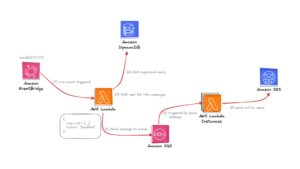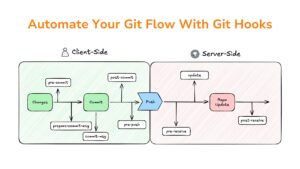Guide to Mastering the Web Development Life Cycle
28/04/2023
2.02k
Today, all businesses can effectively reach their target market by using website design. However, behind a complete and professional website are hours of UX/UI design, monitors crammed with thousands of lines of code, testing, bug fixing, and feature enhancement. People are typically unaware of the various stages the web application goes through.
And if you plan to hire a web development company to create one, you need to know how your project will be developed. In this blog, we have provided all the vital information you need to know about this process as well as outlined the seven steps of the web development life cycle, which’s standard workflow at SupremeTech.

Understanding The Web Development Life Cycle
The process of building a website or web application, which includes designing, coding, testing, and deploying it to a production environment, is referred to as web development. In order for the website or application to continue to meet the needs of its users and function properly, it also involves ongoing maintenance and support.
The web development life cycle, on the other hand, is a methodology or framework that outlines the precise steps involved in the development process, such as planning, design, development, testing, deployment, and maintenance. It offers a structured method for web development, assisting in the systematic and effective creation of the website or application.
Investing in a well-structured web development life cycle can help organizations develop better websites that meet the needs of their users while also reducing costs and improving collaboration and transparency.
Statistics from Fit Small Business show that not only large businesses but also small ones are focusing their resources on building websites, and this is an effective way for them to introduce their brand to potential customers.
The Stages of the Web Development Life Cycle
Web Development Life Cycle (WDLC) involves several stages that start from conceptualization and ends with the deployment and maintenance of the web application. The following are the stages involved in the WDLC:

1. Planning
In this phase, the target market, the necessary resources, and the objectives of the website or web application are all determined. It’s critical to picture the kinds of people you want to visit your website. This involves understanding the demographics, psychographics, and behavior patterns of the target audience. This information is used to create a user persona that guides the design and development of the website.
The planning phase also includes many other crucial decisions, such as choosing the technology stack and software development methodologies, creating a strong sitemap and wireframe, allocating resources, and many others.
2. Analysis
When all the requirements of the website or web application are defined, a detailed analysis is conducted to understand the technical feasibility, risks involved, and potential challenges. It lays the foundation for the rest of the development process and ensures that the website meets the needs of the target audience. Proper planning and analysis during this stage can save time and money later in the development process and ensure the success of the website.
3. Design
One of the most important stages of the web development life cycle is this one. Wireframing and website layout design are part of this phase. The layout of the website’s main page serves to show how information is organized, creating a visual tour of the content. During this stage, you must also design the wireframe. The base layout of the website is created by converting the designed wireframe into tabs, menus, buttons, dashboards, graphics, color schemes, and web typography.
It’s also essential to use web design to satisfy audience demand as well as the brand image. The website’s bounce rate will rise if the design is uninteresting and unable to hold visitors’ attention. Fit Small Business also reports 38% of users will leave a bad website rather than try to navigate it, and nearly 39% of professional web designers agree that bad design repels visitors.
4. Development
In this stage, the actual development of the website or web application takes place using various programming languages, frameworks, and tools. Your website’s client-side and server-side development must then be completed. This is the most time-consuming phase in the web development process.
In order to get the best performance out of your website, you must perform both front-end and back-end development.
5. Testing
Every developer must test a website multiple times before it is finally launched to guarantee better performance and a better user experience. In this stage, the website or web application is tested for its functionality, usability, compatibility, and security. If you skip this step, your website may experience numerous errors that will negatively affect its quality and performance. More than just web design, users expect excellent customer service as well. After three (or even fewer) poor customer service encounters, four out of five users are willing to abandon a brand they are loyal to.
6. Deployment
The website or web application is deployed on the server and made accessible to the public during this phase. Depending on the size and complexity of the project, the deployment process may involve different steps, such as configuring the environment, compressing files, establishing caching, and establishing load balancing.
7. Maintenance
The job isn’t done yet. Continuous feedback from user interaction informs you of potential areas for improvement. Regular maintenance and updates are critical to keeping the site running smoothly and engaging new users.
All phases of the web development life cycle are critical to the success of your website. As a result, you must complete all of these steps in order to create the best-performing website for attracting more users and growing your business.

Common Challenges in Web Development Life Cycle
Web development can be challenging due to various reasons, here are three common challenges in the WDLC:
Poor Communication
While good communication among employees may boost the efficiency and success of web development, poor communication may ruin its life cycle. Every stage of the cycle needs a seamless flow of information and ideas across teams. Small friction in communication not only costs much time and money but also prevents achieving the goals of web development projects. So, such barriers should be identified timely to boost productivity.
Scope Creep
Scope creep is a common problem and may occur through every phase of a web development life cycle. There are various reasons causing scope creep, namely deficiency of detailed scope, ineffective communication skills, and so on. For instance, at the development stage, a developer adds a feature which displays appealing images and website menu, but it takes more days and out of client requirements. Although that feature is great, it is outside of scope and may affect project progress. Therefore, each phase of web development must be managed properly to avoid scope creep.
Lack of Testing
In the life cycle of web development, the absence of testing can undoubtedly present a challenge. Without proper testing, there is a risk that the website or application may contain bugs or errors, which can lead to a poor user experience, lost revenue, and damage to the reputation of the business or organization. Testing can also help to identify areas for improvement, such as performance bottlenecks or usability issues. By identifying these issues early on, web developers can make changes to the website or application to improve its overall performance and user experience.

Mastering The Web Development Life Cycle with SupremeTech
The Web Development Life Cycle, in summary, is an essential framework for creating excellent, functional websites and web applications. Building effective and dynamic websites requires a thorough understanding of the web development process and the technology stack. This would be a difficult and time-consuming task.
Therefore, whether you are a startup with an incredible idea or an established company looking to expand your online presence, hiring an outsourcing team of developers who follow all the guidelines outlined above to help you create an aesthetically appealing website could be a great idea.
Contact SupremeTech for expert guidance from our development team in creating the ideal custom website for you.






















